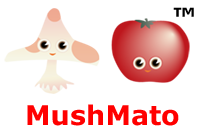
Purchase our book! |
| News |
| For Kids |
| Family Portraits |
| For Parents & Teachers |
| About the Author |
| About the Illustrator |
| Media |
| About Mushmato, Ltd. |
In This World Together
Questions and projects which can be used to promote dialogue about diversity with children
Self-acceptance is an important part of the human experience. Children who accept themselves as they are tend to believe in themselves, their decisions, and try their hardest to accomplish their goals. Self-acceptances is both
motivating and empowering. It is a part of what forms future leaders.
Acceptance of others is also important. Understanding that families may look or think differently from one another is an important lesson to learn. Acceptance of others will help children to adapt to the ever-evolving world around them.
One of children’s first experiences with other ideas and cultures is books. We hope that this book will help your child to feel accepted and help them to understand that families may look and operate differently from their own and that is okay.
In reading this book, we’d like to offer some questions to initiate dialogue about self-acceptance and diversity with your children or students:
1. What do you like about yourself?
2. What do you like about your best friends?
3. How can you be a good friend to others?
4. What are your favorite games to play by yourself? With others?
5. What does your family look like? (Ask children to draw their family portraits). This may be a good time to talk to children about the differences between their families and their friend’s families.
6. Parents: Discuss the ethnic composite of your family. Take out a map and point to the areas in which your family originated from. Tell family stories and talk about the cultural traditions you continue to celebrate today.
7. Ask children if they know why people have different color skin. If they don’t know, explain it to them in your own words. Then take a brown and white egg and have the children crack the eggs into a bowl. Tell them that even though the eggs look differently on the outside, inside they are the same just like all human beings.
8. Ask children to tell you their life story. Then show them a series of photographs of people they don’t know. Ask them what those people’s stories are. Use this as an opportunity to explain to children that everybody’s story is different and that it isn’t kind or fair to make assumptions or judgments about others without knowing their life story. In essence, do not judge a book by its cover.